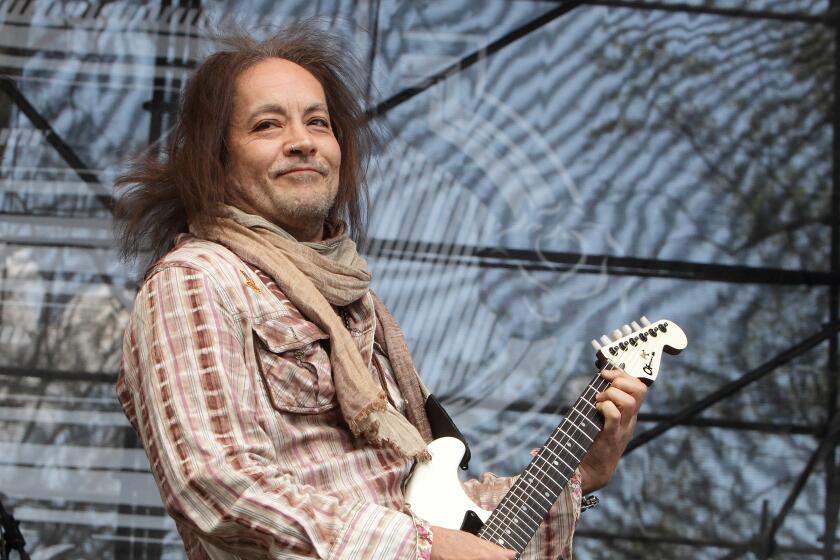Los Angeles’ silent film role
Though there were back lots at Hollywood movie studios in the 1920s, numerous productions opted to shoot on location in Los Angeles. This was especially true with the legendary silent comedians Charlie Chaplin, Buster Keaton and Harold Lloyd, who loved filming in downtown L.A., Hollywood and other local environs. Today their films offer a fascinating time capsule into the landscape and daily life here 90 years ago.
John Bengtson, a San Francisco-based lawyer, has spent the last several years identifying the locations in these silent clowns’ shorts and features and comparing them to what they look like today. He’s written the books “Silent Echoes: Discovering Early Hollywood Through the Films of Buster Keaton” and “Silent Traces: Discovering Early Hollywood Through the Films of Charlie Chaplin.” His latest is “Silent Visions: Discovering Early Hollywood and New York Through the Films of Harold Lloyd.”
On Wednesday at the Academy of Motion Picture Arts and Sciences’ Samuel Goldwyn Theatre before the screening of Keaton’s 1927 Civil War epic comedy “The General,” Bengtson will be giving a “then and now” lecture.
FOR THE RECORD, 9:50 a.m. July 18: In an earlier version of this article, John Bengtson’s name was misspelled as John Bengston.
“This is the first time I am going to do an overview and paint a broad picture of how these common Los Angeles landscapes — Bunker Hill, the Plaza de Los Angeles and Hollywood — appeared in their films,” Bengtson noted. “It is really going to give a big picture of how Los Angeles looked in the 1920s.”
Bengtson didn’t turn into a Sherlock Holmes of locations until DVDs came along. “On DVD you can freeze frames on your computer and take film grabs and compare them,” he said. “I have always been fascinated by history, and I started looking for obvious things in the frames, like business signs and street signs in the background.”
Decked out in a three-piece suit, straw hat and wire-rim glasses, Lloyd played an everyman character in his comedy classics, such as 1923’s “Safety Last!,” the most famous of his comedies, which features him hanging from the hands of a building’s clock; 1924’s “Girl Shy”; and 1925’s “The Freshman.”
“The place he filmed most frequently was at Bunker Hill at 3rd and Grand,” said Bengtson. “That section of 3rd Street was only two blocks long and ran above the 3rd Street tunnel, so if you think about it, all the through traffic was going under the tunnel so that made it convenient to shut off the street above the tunnel.”
Lloyd also loved to shoot at Court Hill near the Civic Center. “That was where the Bradbury Mansion was,” said Bengtson. “The Bradbury became a movie studio so both Charlie Chaplin and Harold Lloyd in their early years worked from this elaborate Victorian mansion. The mansion was right around the corner from the overlook of the Hill Street tunnel. You could build a set next to the balustrade overlooking the tunnel and it would give the illusion of height. “
The clock gag from “Safety Last!” was filmed on top of the building at 908 S. Broadway that still exists. “They built an elaborate two-story facade on the roof of this building,” said Bengtson. “The way Harold filmed the illusion of the climb up the building is that he would build sets on the top of increasingly taller buildings. He starts out on the roof of a two-story building, the clock was built on top of a nine-story building, and the climax was filmed on top of a 13-story building. “
Hollywood was also a favorite locale for Lloyd. “He filmed a great chase sequence for ‘Girl Shy’ along Hollywood Boulevard,” said Bengtson. One sequence was shot outside a mansion at Hollywood and Orange that was torn down to make way for the Hollywood Roosevelt hotel. “He also filmed scenes right next to Grauman’s Chinese Theatre, but that hadn’t been built yet either!”
More to Read
The biggest entertainment stories
Get our big stories about Hollywood, film, television, music, arts, culture and more right in your inbox as soon as they publish.
You may occasionally receive promotional content from the Los Angeles Times.











